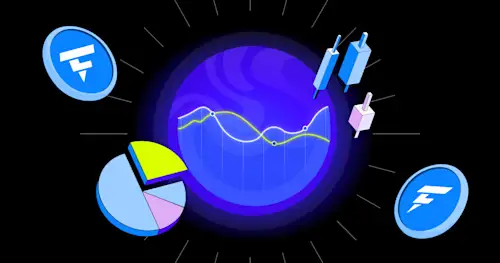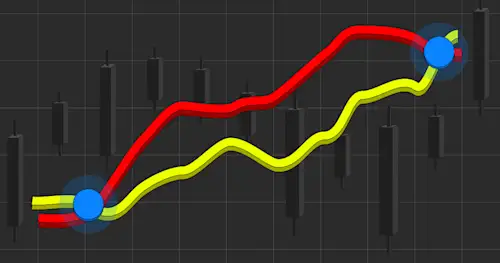Related Articles





In cryptocurrency trading, knowing when to enter and exit a position often determines your profitability. Among the most widely used technical tools for precision trading are Fibonacci levels. Derived from a centuries-old mathematical sequence, Fibonacci retracement and extension levels help traders identify potential support and resistance zones, spot trend reversals, and plan trades with higher confidence.
In this guide, we’ll cover what Fibonacci levels are, how they work in crypto trading, and actionable strategies to use them for smarter trading decisions.
Fibonacci levels are horizontal lines on a price chart that indicate where support and resistance are likely to occur. They are derived from the Fibonacci sequence, a mathematical pattern in which each number is the sum of the two preceding numbers (1, 1, 2, 3, 5, 8, 13, 21…).
In trading, the key Fibonacci ratios—23.6%, 38.2%, 50%, 61.8%, and 78.6%—are calculated from this sequence and plotted on charts to highlight retracement and extension zones.
Fibonacci Retracement Levels:
Identify potential pullback zones within an existing trend.
Traders use these levels to buy the dip in an uptrend or sell the rally in a downtrend.
Fibonacci Extension Levels:
Project potential price targets when the price moves beyond its previous high or low.
Useful for setting take-profit levels or spotting areas where price might encounter resistance.
The cryptocurrency market is notoriously volatile, with prices often reacting to key psychological support and resistance levels. Fibonacci levels provide traders with a structured way to navigate this volatility. They can be used to spot potential entry points, such as entering trades near retracement levels during a market pullback. Traders also rely on Fibonacci extension levels to identify profit targets, helping them plan exits more effectively when the market trends strongly. Additionally, incorporating Fibonacci retracement levels with stop-loss orders allows for better risk management, minimizing potential losses if the market moves against the trade. By combining Fibonacci analysis with other technical indicators, traders can increase confidence in identifying potential reversals and make more informed trading decisions.
Fibonacci retracement is typically used during a trending market to identify where price might pull back before continuing in the same direction.
Identify a Trend: Determine a clear upward or downward movement on the chart.
Plot the Tool:
For an uptrend, draw from the swing low to swing high.
For a downtrend, draw from the swing high to swing low.
Observe Retracement Levels: Watch how price reacts to 38.2%, 50%, and 61.8% levels.
Look for Entry Opportunities: Enter trades near retracement zones if the price shows confirmation signals like candlestick patterns or volume surges.
Example: If Bitcoin rallies from $20,000 to $25,000 and then retraces, key Fibonacci support levels would be:
38.2%: ~$23,090
50%: $22,500
61.8%: ~$21,910
Fibonacci extension levels are best used to project price targets after the market breaks past a previous swing high or low.
Identify the Initial Trend Move: Measure from a recent swing low to swing high (uptrend) or swing high to swing low (downtrend).
Add the Retracement: Identify where the price pulls back after the initial move.
Plot Extension Levels: Common levels include 127.2%, 161.8%, and 261.8%.
Plan Take-Profit Zones: Exit partial positions at extension levels to secure profits.
Example: If Ethereum rises from $1,500 to $2,000, retraces to $1,750, and continues upward, potential extension targets are:
127.2%: ~$2,145
161.8%: ~$2,323
Fibonacci works best when combined with tools like moving averages, RSI, MACD, or volume analysis to confirm entries and exits.
When Fibonacci levels align with trendlines, horizontal support/resistance, or moving averages, these areas become stronger trade zones.
Fibonacci levels indicate probable reaction zones, not guarantees. Always confirm with price action signals.
Crypto markets can produce deep retracements. Consider multiple Fibonacci levels (38.2%, 50%, 61.8%) before committing to entries.
Using Fibonacci levels without risk management can lead to losses during false breakouts or unexpected volatility.
Set Stop-Loss Orders: Below the next retracement level in an uptrend, or above it in a downtrend.
Use Position Sizing: Risk only a small percentage of your capital per trade (1–2%).
Secure Partial Profits: Scale out positions at key extension levels to lock in gains.
For example, suppose Bitcoin is in an uptrend, rising from $25,000 to $30,000. A trader would begin by plotting the Fibonacci retracement from the swing low ($25,000) to the swing high ($30,000). As the price pulls back, it finds support at the 50% retracement level around $27,500 and forms a bullish reversal candle—signaling a potential continuation of the trend. At this point, a trader might enter a long position, placing a stop-loss just below the 61.8% retracement level at $27,000 to manage downside risk. Using Fibonacci extension levels to set profit targets, the trader could aim to take profits at the 127.2% level (approximately $31,350) and the 161.8% level (around $32,450).
Fibonacci retracement and extension levels are powerful tools for crypto traders looking to enhance timing, manage risk, and capture market momentum. While they aren’t foolproof, combining Fibonacci analysis with other technical tools and disciplined risk management can significantly improve your trading outcomes.
Plan your market entries and exits with confidence and execute your strategies seamlessly on Flipster. Benefit from zero spreads on major crypto pairs like BTC and ETH, ultra-low fees, and the ability to earn while trading.
Start trading on Flipster today and turn your market insights into real opportunities.
Disclaimer: This material is for information purposes only and does not constitute financial advice. Flipster makes no recommendations or guarantees in respect of any digital asset, product, or service. Trading digital assets and digital asset derivatives comes with a significant risk of loss due to its high price volatility, and is not suitable for all investors. Please refer to our Terms.



